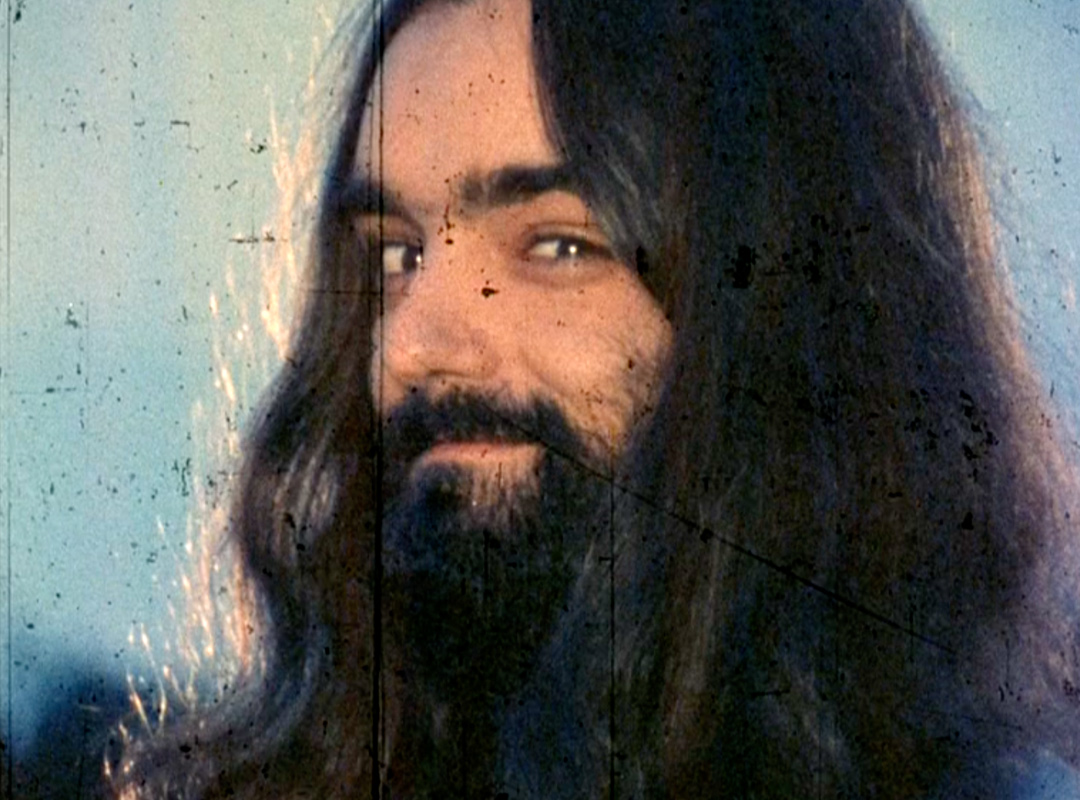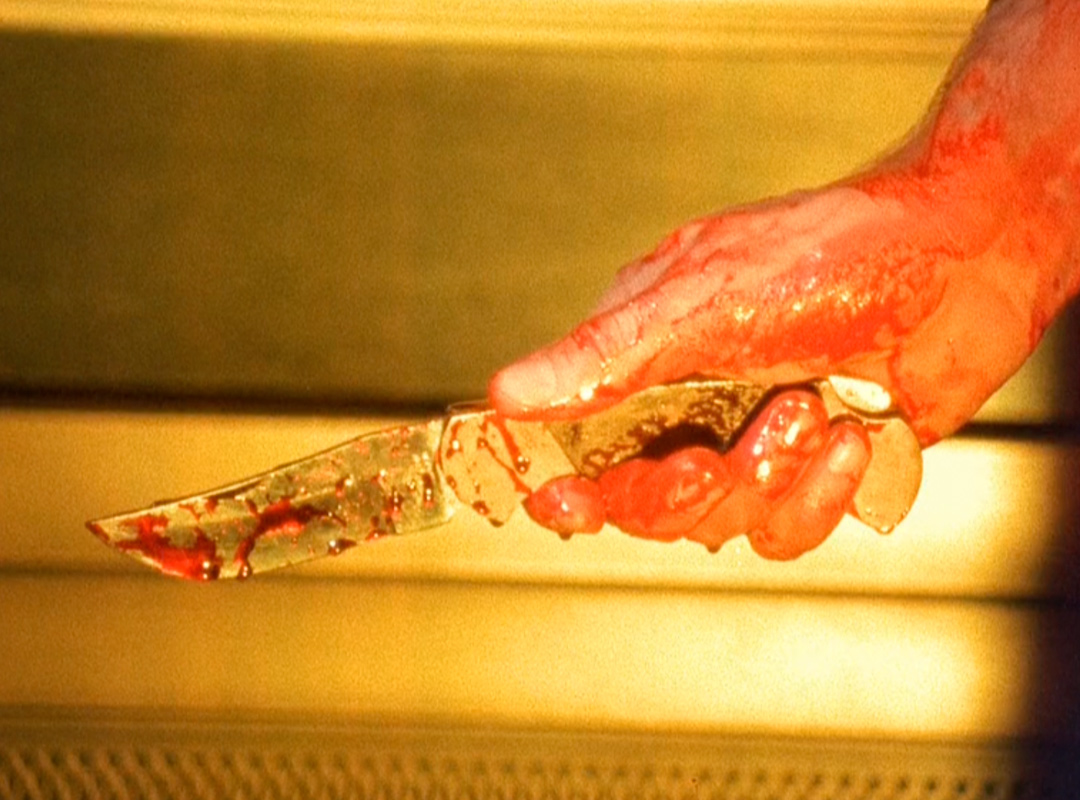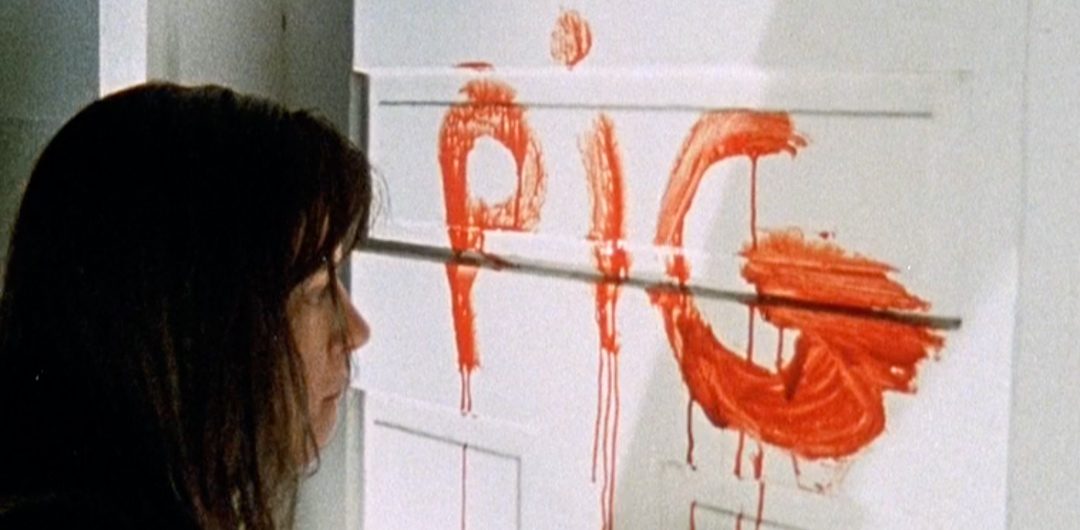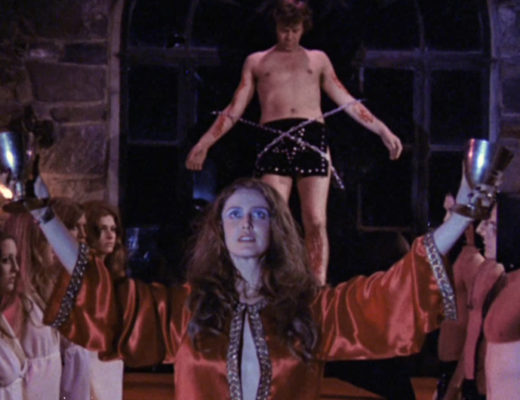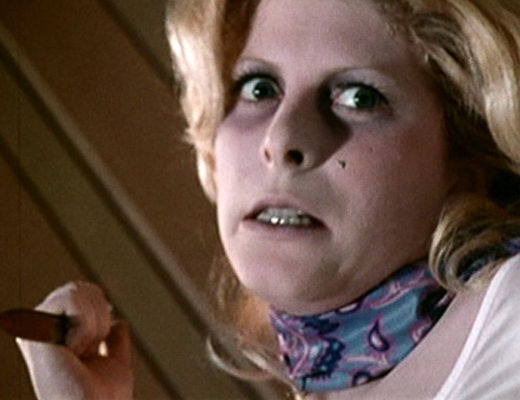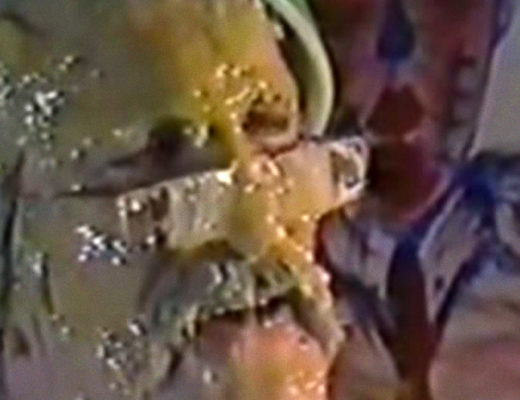I couldn’t sleep after watching The Manson Family.
It wasn’t because of the story of Charles Manson and his cult of murderers. I’ve read Helter Skelter by Vincent Bugliosi and listened to Karina Longworth’s You Must Remember This podcast — I know all about the drug abuse, racism, and manipulation that led to the ghoulish crimes. But The Manson Family goes beyond real-life. Watching this movie is like injecting a syringe laced with LSD and crystalized nihilism directly into your brain. It gets you really high. But when you come down, you’re pretty much convinced that there’s no hope for the human race and everything was for naught.
Jim Van Bebber has done it again.
The Manson Family doesn’t have a linear plot. The movie presents the loose concept of a Hard Copy-styled TV show that tells the story of the crimes. From there, we settle into a manic stream-of-consciousness dark ride that jumps between the events that happened in 1969, interviews with the surviving members of the family, and a current Manson-worshipping fetish cult that might follow in his footsteps. There’s tons of sex, yelling, and brutal kills. Plus a scene where the modern day cultists watch Richard Kern’s You Killed Me First, one of the building blocks of the Cinema of Transgression movement of the 1980s. And that’s when it all falls into place.
Next to Devo, The Breeders, and The Dead Next Door, Van Bebber is pretty much the most important thing that ever happened to Ohio. With a maniacal do-it-yourself filmmaking ethos (and persona to match), he’s everything Rob Zombie can never be — a talented outlaw filmmaker who’s able to make poignant and unsettling statements through the veneer of trash aesthetics. Van Bebber’s movies are never easy. They’re filled with uncomfortable violence, sexual assault, and lots of testosterone. But Van Bebber isn’t a bonehead. Deadbeat at Dawn, his debut vigilante epic, has an artistic edge that you won’t find in Vigilante or Cobra. My Sweet Satan, Van Bebber’s short (and hot) take on the Ricky Kelso murders, feels like the dark side of Ghost World; a coming of age story that includes onscreen nipple piercing and a gnarly head-stomp.
The Manson Family is total chaos. It never lets up. For this reason, it’s easily Van Bebber’s crowning achievement as an exploitation renegade.
Filmed over eight years and utilizing multiple film stocks, The Manson Family is a 95 minute experimental collage that feels like the historical fiction you’d watch after ingesting fifteen times the normal recreational dose of acid. As he did with My Sweet Satan, Van Bebber sticks close to the facts while providing little context for the audience. We meet key players in the Manson vortex, like music producer Terry Melcher and drug dealer Bernard “Lotsapoppa” Crowe. But there’s no explanation as to why they appear or who they are. The focus is on delivering a relentlessly fatalistic mood with an incredible attention to detail. Through the use of montage, crude animation, freeze frames, and a spastic pace, the ugliness of the crimes is perfectly paired with sensory overload. We’re unsettled because we never know what’s coming — even if we think we do. Everything catches us off-guard, like we’re eating a Charms Blow Pop with a center made out of coal instead of bubblegum. The overall experience is just as devastating as watching Last House on Dead End Street or Cannibal Holocaust, but with an added appreciation for Van Bebber’s stylish sense of design.
I appreciate Once Upon a Time in Hollywood. But I’ll always prefer once upon a time in Ohio.
